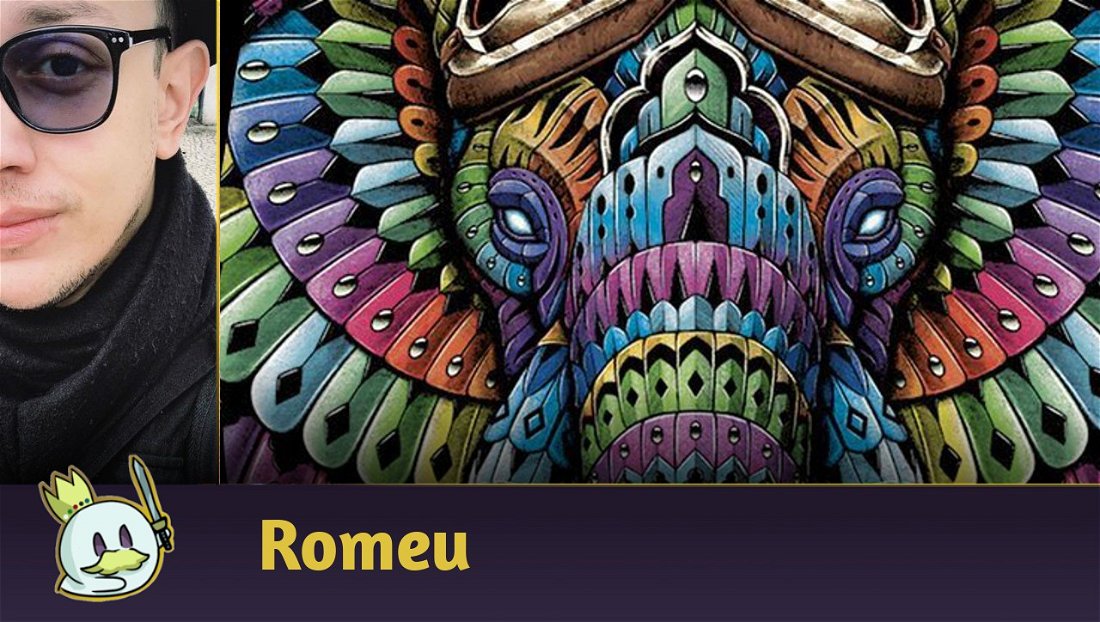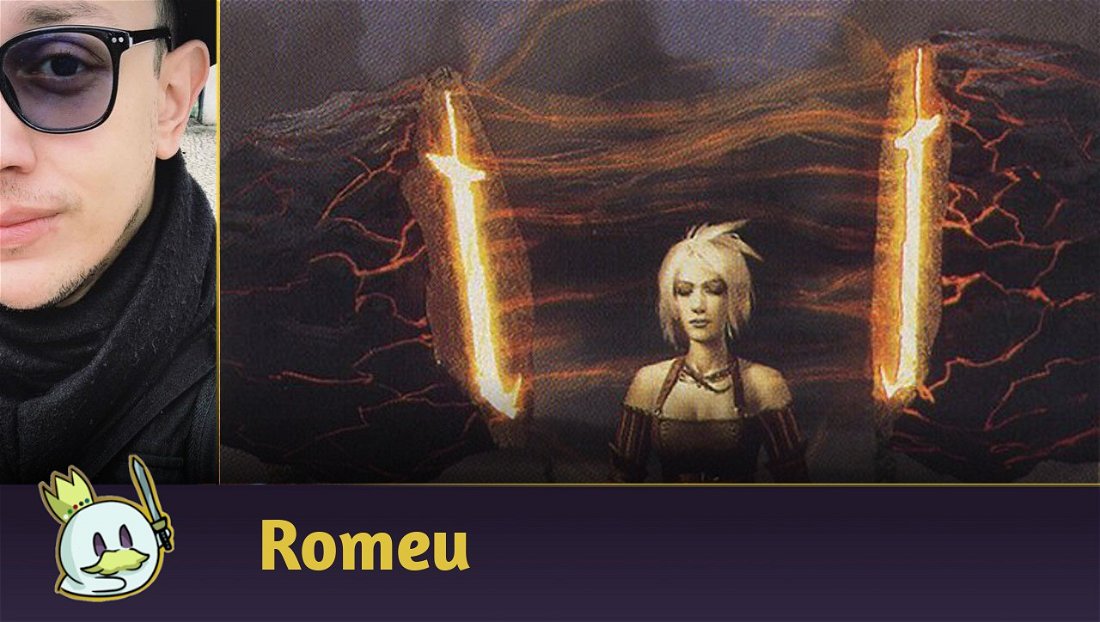Introduction
Hello, fans of Vintage! Today, we'll switch it up a bit and discuss the format which is considered by many a distant reality without any practical uses, which is actually true for most tabletop players. As Magic Online doesn't follow the same rules for reprints as tabletop MTG, cards that cost a few thousands of dollars can be acquired digitally for a fraction of their cost in real life.
Being able to use cards that most players don't even dream of using in real life has brought countless players to Vintage. As it is usual in digital formats, Vintage's metagame changes and adapts much quicker than tabletop MTG, and, even though this format allows all the cards released in Magic: The Gathering's long history, recent sets, particularly those released straight to Modern (Modern Horizons 1 & 2 and Lord of the Rings), have significantly affected Vintage.
Ad
A Little Bit of History

When Wizards of the Coast declared MTG would be divided into formats for the first time, what we know today as Vintage was called Type 1. With time, and after getting no support from WotC, this format became unpopular and a mere novelty, until a movement in the early 2000s started organizing tournaments with proxies and reduced its "barrier to entry" considerably. It was at this time I first got in touch with Vintage's competitive scene, much thanks to the articles written by Stephen Menendian, one of the greatest Vintage advocates and the 2007 Vintage World Champion. I can recall, in detail, an article of his about a combo deck called Long.deck that started out like this: "this is the article that, I think, will make Lion's Eye Diamond and/or Burning Wish be restricted". And that's what actually ended up happening!
At this time, some cards were established as what the Wizards defined the "pillars of Vintage": Mishra's Workshop, Dark Ritual, Bazaar of Baghdad, Null Rod, and Mana Drain. Each of these cards represented a group of Vintage archetypes rather accurately - Prison, Combo, Graveyard, Aggro, and Control, respectively. These were cards Wizards tried not to touch, and, instead, they'd restrict (remember, apart from a few rare exceptions, WotC doesn't ban cards in Vintage, but restricts them to one copy per deck) cards that orbited these pillars.
With time, after this format was adapted digitally, and got new cards, the popularity of a few of these pillars went down, such as Mana Drain. Others came out of the spotlight, like Dark Ritual and Null Rod - this black instant practically only plays in Storm nowadays and this artifact is considered more of a sideboard tool - and new cards became the new pillars of Vintage: Urza's Saga and White Plume Adventurer.

In the middle of all of this, we have to consider that practically all Vintage lists that don't use Bazaar of Baghdad use the set with the 5 original Moxes, and, obviously, that famous card that even people that don't play Magic have heard about ("isn't that the game that has a card worth 1 million dollars?"): Black Lotus! Additionally, the lists that can access Blue invariably will also use Ancestral Recall and Time Walk. Another important combination that has become the main means to victory in many decks is the duo Time Vault and Manifold Key, which creates infinite turns. After this, killing your opponent will be a mere formality.
A somewhat misguided concept that many players who aren't used to this format have is that Vintage only has turn 1 combos. This concept couldn't be further from the truth. At this point in the metagame, this format is balanced and welcomes several archetypes, and is practically made up of 1/3rd Aggro decks, 1/3rd Control decks, and 1/3rd Combo decks!
So, let's see the winners and losers of Magic: The Gathering's most powerful format!
Ad
Tier 1
Lurrus Saga Control
The archetype at the top of this format, actually, are three versions of a Control deck - Dimir, Azorius, and Esper - which focus on Urza's Saga and Lurrus of the Dream-Den.
These decks don't have a straight path to victory, but they win the resource battle with several cards that draw other cards or with the recursion created by Mishra's Bauble and Lurrus. So, eventually, we'll open up the way to victory with the Construct tokens created by Urza's Saga.
Paradoxical Jewel Shop
Paradoxical Outcome was already one of the main combo decks in Vintage: Coveted Jewel forced this deck to use Mishra's Workshop to create a mix of mana and cards that is incredibly difficult for most players to deal with.
This deck got more gas and protection, which was then conveniently boosted by the powerful Antiquities land and The One Ring.
White Initiative
Can a deck without Force of Will compete in such a format? We got our answer with this deck, which is the new home to one of the two cards which were recently banned in Legacy: White Plume Adventurer.
Even though it can't access the blue instant above, this deck can interact with your opponent as soon as turn 0 through Chancellor of the Annex, and it is, out of all the other decks listed in this article, the archetype that can use the best non-restricted Mox in Vintage, Chrome Mox, the best. With this combination of cards, we have all the tools we could possibly have and imagine to disrupt our opponent's game plan while we put pressure on their life points, such as: Thalia, Guardian of Thraben, Archon of Emeria, Anointed Peacekeeper, Loran of the Third Path, and Dauntless Dismantler, usually protected by Cavern of Souls.
Tier 2
Dredge
There is an unwritten rule in Vintage: don't cut your graveyard hate. Every time players think they might find some space in their sideboard if they remove one of their cards to deal with graveyards, Dredge will be there to remind them it has an entirely different game plan than all other Vintage decks.
This deck was built to find and activate Bazaar of Baghdad on turn 1; from then on, you'll play an avalanche of revived creatures which will be challenging to deal with.
Oath of Druids
Ever since it was banned from the now-deceased Extended format in 2004, Oath of Druids, which has been banned from Legacy since day 1, has been one of the main strategies in Vintage. Players in this format have used several cards as the targets of this enchantment, but the current choice is Atraxa, Grand Unifier.
A change of strategy compared to the old lists is that this deck has now also incorporated Show and Tell as another way to cheat out the Evilest Angel in play. And speaking of Evil, another great villain banned in all other formats that has found a new home in Vintage is the absurdly powerful Oko, Thief of Crowns.
Ad
MUD
Speaking of traditional Vintage decks, mono-artifact Prison decks are a constant presence and have forced WotC to restrict countless cards just to keep Mishra's Workshop in this format (Trinisphere, Lodestone Golem, Thorn of Amethyst) and are still a force that demands respect.
Just to show you how the concept of pillars itself has become a bit outdated: this deck uses both Mishra's Workshop, Null Rod, and Urza's Saga.
Tier 3
Bazaar Aggro
For many years, Bazaar of Baghdad was synonymous with Dredge. However, there is another archetype that abuses this card, spits out Rootwallas, Hollow One, Vengevine, and Poxwalker on the board, and refills with Squee, Goblin Nabob and Master of Death.
Sultai Midrange
In this archetype, we find lists that do what Aggro decks want to do in this format: disrupt your opponent's game plan, but this time with Green! And Black! And Blue! So, this deck can access Collector Ouphe, Opposition Agent, Leovold, Emissary of Trest, and Oko, Thief of Crowns.
Storm
Dark Ritual was one of the pillars of vintage, but it's now low-tiered. The Storm deck is that deck which, in the minds of players that don't play this format, sums up Vintage. In practice, it has to navigate around several decks full of disruption, and other combos that are more consistent. It has also become the home to that which was once, one day, considered the strongest card in this format: Yawgmoth's Will.
Doomsday
This deck has the same game plan as its version in Legacy: play Doomsday, set up a pile of 5 cards that plays Thassa's Oracle, the end. There's an extra combo: use Demonic Consultation, name a card that isn't in your deck, and consequently exile it to win with the Oracle.
Tier 4
Underworld Breach
This is another combo deck, and its goal is to play the enchantment that gives it its name and basically creates infinite cards when combined with Brain Freeze: this Storm card fills your graveyard with enough cards to Escape Black Lotus, which will create mana for you, and Escape more Brain Freeze, this time in your opponent's deck.
Azorius Initiative
This list gave up the explosion and disrupt elements in its Mono White brother in exchange for Force of Will and Urza's Saga. It is like White Initiative and Azorius Saga Control had a child.
4C Aggro
This version is more aggressive than Sultai and can access Lurrus of the Dream-Den, but both decks are quite similar.
Merfolk
This is the original Aggro-Control! Unlike its Legacy version, its focus isn't Lords (which will give all Merfolk +1/+1), but rather Merfolk that disrupt your opponent's game plan.
Final Words
Even though it has more cards than Legacy, Vintage's tiers accommodate fewer decks. The decks listed above make up more than 90% of this format. Still, it is a super fun format, with decks that suit all tastes (do I need to say that Initiative is my favorite?).
Ad
If you can invest in Magic Online, you'll have access to a power level that isn't possible anywhere else - only Legacy comes a bit close.
This is the end of our analysis of this ancient format. I hope it awakened your interest.
Thank you for reading, and see you next time!








— Comments0
Be the first to comment